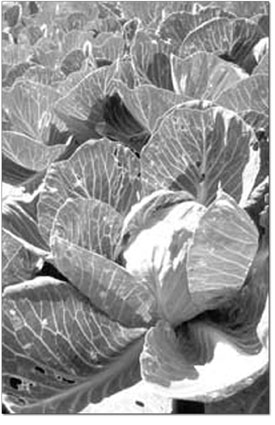| ||
Borscht mama
by Ari LeVaux My mom stood in front of my cutting board, dwarfed by a giant head of cabbage from the last farmer’s market. In her hand was a knife that was also disproportionately large. “Ever eat a cabbage heart?” she asked. Since I’ve eaten every part of the cabbage, I’ve likely eaten this alleged cabbage heart before without being aware of it. I decided this meant the answer to her question was “No.” She poked the knife into the bottom of the cabbage, making four cuts all around the stem. Then she sliced the cabbage off the stem, which was still attached to the material that was in the center of the cabbage. She handed this to me and I munched. Despite my considerable experience with cabbage, I had not known how sweet the heart of cabbage is. Sweeter still was the simple fact that Mom was still teaching me. Looking at those cabbage slices, I remembered something that I hadn’t remembered since I was a little kid; it has to be one of my earliest memories. I was about 4 years old, and we were on the side steps of our little house. Maybe she was about to feed me a cabbage heart. All I remember is Mom sliced into a cabbage to reveal a colony of little green worms. “We better not eat this one,” she had said. I had made a note to my 4-year-old self: Don’t eat cabbage if full of worms. Fast-forward 30-plus years, and Mom was in my kitchen making cabbage borscht. Outside it was grey and pouring rain. “How can this be called ‘borscht’ if there aren’t any beets in it?” I asked. Mom said, “My mom used the word ‘borscht’ for both beet and cabbage borscht.” “Are they the same, just subbing cabbage for beets?” “No, totally different.” First, Mom put six beef marrowbones and two to three pounds of cubed beef brisket into a gallon of water and simmered them together for an hour. She used brisket because she couldn’t find flanken, which is a Yiddish word derived from the plural of Flanke, a German word derived from the French flanc, which means side. But flanken, which comes from the short ribs, is not to be confused with flank steak. Cuts of flanken are like sandwiches of fat meat, and bone. Flanken is flavorful, but tough and fatty, so it’s best if slowly cooked. The linguistic connection to France here is interesting, especially considering that Mom next added a finely diced mixture of four large carrots, four celery stalks and four onions—the components of the classic French mirepoix, which is used to make stock. Indeed, before she added that chopped cabbage (one head), which came soon after, Mom was on track to make a classic beef stock. After adding the cabbage, she let it cook with the meat and bones for a half-hour, and then added two 36-ounce cans of diced tomatoes. After cooking everything together for another half-hour, she added two or three peeled lemons, squeezing in the juice. Then she added sugar and salt to taste, starting with a tablespoon of each. “No pepper!” she reminded me, just in case I’d grown into one of those people who assume “salt” means “salt and pepper.” Eating that subtle and warming soup connected me to my ancestors, who were Yiddish-speaking Ashkenazi Jews from Eastern Europe. My ancestors built their diets around the hearty crops I’ve mentioned: cabbage, carrots and onions in the case of mom’s cabbage borscht, as well as beets, potatoes and garlic, which are present in some variations of cabbage borscht that I found online. These crops, all of them root crops except for cabbage, will last all winter in a root cellar. Any way you slice the root or cook the soup, I’m a child of borscht. As an Ashkenazi, the chances are good that I’m also descended from one or more of just four women. Recent genetic research indicates that 40 percent of all Ashkenazis carry the genetic fingerprint of at least one of these four “Originals,” as I call them. Over the last 2,000 years, Ashkenazi borscht has evolved in almost as many directions as the Ashkenazi. Variations of cabbage borscht contain raisins, caraway seeds, potatoes, garlic and – get this – beets. Ukrainian cabbage borscht has kidney beans. Russian cabbage borscht is served with dill and sour cream. All of them, except for newfangled low-fat or vegetarian versions, contain meat. As I ate the soup, I knew that it was my destiny to soon carry the borscht torch to the next stage of its evolution. Would the meat be browned first? Would there be garlic? Would it be served with mayonnaise? Yes, yes and of course, yes. But in the meantime I had other business to take care of. •
|
In this week's issue...
- December 18, 2025
- Let it snow
Although ski areas across the West have taken a hit, there’s still hope
- December 18, 2025
- Look, but don't take
Lessons in pottery theft – and remorse – from SW Colorado
- December 11, 2025
- Big plans
Whole Foods, 270 apartments could be coming to Durango Mall parcel


